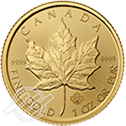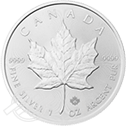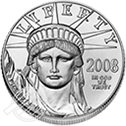War on Trade Could Force the Fed’s Hand
Not long ago, the Federal reserve had taken a decidedly hawkish approach towards monetary policy. The Fed seemed confident in the economy and was ready to continue the current cycle of interest rate hikes. Market dynamics have shifted significantly in recent months; however, and thus the Fed may be forced to reverse course and start cutting rates again.
The market has already priced in a 25-basis point hike by the end of the year.
With the latest Fed meeting minutes looming this afternoon, the question now may be whether the central bank feels it has to take a more aggressive approach to easing.
The ongoing U.S./China trade war is clearly having an impact on the economies of both countries. A deal was thought to be close in recent weeks, however, negotiations quickly unraveled, and both sides took action by increasing current tariffs. No firm date has been set for a continuation of talks between President Trump and Chinese leader Xi Jinping, and recent optimism has quickly faded.
If the war on trade continues, the Fed may be left with little choice but to cut rates even further than anticipated to combat the resulting economic slowdown. After all, there is little, if any, inflation to speak of and the Fed does not have to worry about the economy overheating. Perhaps the bigger worry should be what the central bank might do if the slowdown deepens and persists.
The last time the Fed had to embark on a rate cutting campaign, the Fed Funds rate was around 5.25% to 5.50%. This time around, however, rates are at less than half of those levels. A rate cutting campaign may not, therefore, have the same shock and awe effect it did previously. With less ammunition to work with, the Fed could be forced to explore larger measures such as another round of QE.
Thus far, an increasingly dovish Fed has not had a significant impact on the dollar. In fact, the dollar has remained strong and near the higher end of its recent trading range. Lowering rates more than expected or resorting to QE again could, however, put a major dent in the dollar.
The combination of a slowing economy or recession, war on trade and a weaker dollar could be a major catalyst for higher gold.
Once the next recession hits-and that could be sooner rather than later-investors will likely start exiting equities in droves. With stock markets faltering and headed into bear market territory, investors will be forced to look for alternatives. The mix of lower stocks, a lower dollar and increasing risk aversion could potentially set the stage for the next major cyclical bull market in gold.
The writing seems to be on the wall, and now is the time to take action before the economy slows further. Adding gold to your portfolio has never been easier, and perhaps never more important.
Pick up the phone and speak with an Advantage Gold account executive today about the potential benefits of gold ownership and to learn more about the key role it may play in the years and decades ahead. Our associates are here to answer any questions you may have and can even show you how to diversify with this key asset class using an IRA account.
Don’t wait for the next recession to take hold or for stocks to crumble again. Explore your options for gold ownership today. Call Advantage Gold at 1-800-341-8584 to get started now.
Tags: basis point hike, exiting equities, market dynamics, next recession, slowing economy, war on trade, weaker dollar


